Replacement Grease Cap for Kodiak 7,000-lb, 7,200-lb, and 8,000-lb Disc Brake Kits

Thank you! Your comment has been submitted successfully. You should be able to view your question/comment here within a few days.
Error submitting comment. Please try again momentarily.
- All Info
- Reviews (122)
- Q & A (0)
- Videos (2)
- Photos
Kodiak Trailer Bearings Races Seals Caps - KPCAP
- Caps
- Oil Cap
- 2.875 Inch I.D.
- Kodiak
Replaces 1 grease cap with O-ring and plug for your 7,000-lb, 7,200-lb, or 8,000-lb Kodiak hub-and-rotor disc brake kit.
Features:
- Fits 7,000-lb, 7,200-lb, and 8,000-lb Kodiak hub-and-rotor disc brake kits
- Fits 2.25" spindle only
- Clear polycarbonate cap functions as either a grease cap or oil cap
- Watertight O-ring seal
- Thread outer diameter: 2-7/8"-12 O.D.
- Requires 2-3/16" socket or wrench for installation
- Includes cap, O-ring, and plug
8001 Replacement Grease or Oil Bath Cap for Kodiak 7K, 7.2K, or 8K Brake Sets - Large Clear
Replaces Rotor/Hub8KPCAP
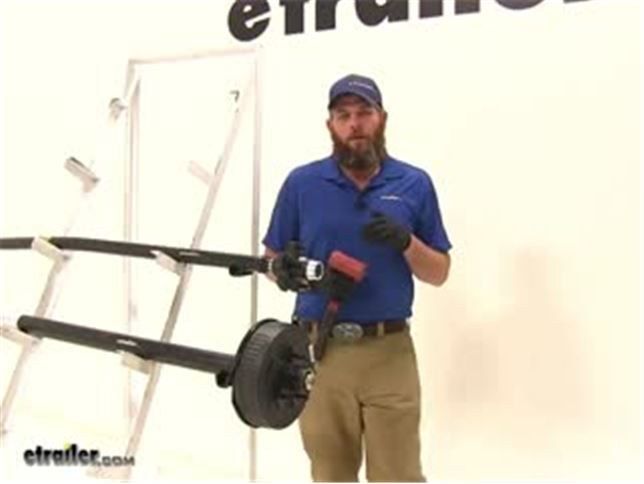

Videos are provided as a guide only. Refer to manufacturer installation instructions and specs for complete information.
Video Transcript for Trailer Bearings Races Seals and Caps Rebuild
Speaker 1: Today we're going to take you through the rebuild process on a couple of hubs. We've got an idler hub, and here we've got a hub and drum assembly. Works with electric rigs, but this can also work for just standard discs, if you've got a disc brake style setup.Basically what we're going to show you is how to get all of the bearings out. How to remove the seal. How to remove the race's if they're damaged, then get them replaced in the proper manner. We'll show you how to use an easy loop hub, which we have here.The first thing we are going to need to do is, get the grease cap off the end.
It can have either a rubber plug in it like this one does, or it can be a solid metal cap.These are pressed fit in there, basically by tapping on them on the back side. To remove them, a deadbolt hammer is typically what we're going to use. We're just going to start tapping as we go around. You'll see a little separation start right here, and slowly it'll work it's way off.Now the next step's going to vary a little bit depending on your axle setup. Do you see this is going to have a keeper that goes around the nut.
And that prevents that from being backed off, or removed. A lot of times you'll have a castle nut, which will have just little tabs that stick off, and there will be a cotter pin that passes through it. Just depending on your application, you need to get the keeper for the nut off. This style we just kind of pry out. A cotter pin you would just remove of course.Once we have that off ...
We'll start to take off the nut here, and the washer that's in behind it. Now yours should look a whole lot more dirty than this. There should be a lot of grease packed in, and through the hub, this one's brand new. We thought it'd be nice to show you the components before the grease was on .. Of our washer that comes off.And then here we're going to have our outer bearing.
Continue to pull that. We're gonig to have our inner bearing here. That sits in the backside of the hub. And we didn't put it in yet, we will show you how to put it in. But a seal would typically be covering the backside here. We'll show you how to use a seal removal tool, or another tool. To get that pried up and out. To get an access to that inner bearing.Now for a drum style like this, that process for disassembly is going to be just the same. One thing to keep in mind if you're using a disc brake setup. You'll have to remove the caliper before the disc is going to come off.Now once we have the spindle exposed, as we said this is going to be really greasy. We want to get all the grease removed, and the first thing we'll do is inspect it. We want to make sure that it looks just like what we have here. Everything's nice and smooth. We don't see any kind of discoloration, or any marring on the metal. Indicating that our bearing's got hot.If you do have any of those symptoms, at this point it's time to replace those bearings. You don't want to repack them. Get new bearings, and put in there. You might have a bearing that's come apart in here. Another surface to ensure is in good condition, is where your seal is going to go. That helps seal all the grease inside of our hub. With a damaged or broken seal, that grease is going to seep out. Either out of the hub, or in this case into our brake assembly.Now if your axle has brakes, we're also going to check the disc. Make sure it doesn't have any issues, or your hub. And this is going to be a hub and drum assembly. The brakes are going to ride on this machine surface. You're going to check that for signs of excessive heat, discoloration, or cracking. And this is our magnet surface. We'll check that surface for the same issues.Now inside the hub regardless if it's a disc brake, it's a drum brake like this. Or just a standard idler style hub. You're going to have an outer race. Would be right here, it's a small tapered piece of metal your bearing sits in, and rotates on. That's basically the outer portion of the bearing.You have the same thing here on the backside. This is called the inner race. Now if those show any signs of wear, overheating, or cracking. Those are also something we'll need to replace, which we'll show you how to do in just a minute.Now, with your brake assembly exposed, if you do have electric brakes like we have here. It's a good idea to check all the components for wear, cracking, maybe missing pieces. Check your pad thickness to make sure those are in good shape. Basically if you have a non working brake assembly and you put everything back together, you're just going to have to take it apart and do it all over again to get back to the brake assembly. This gives you a really good option to be able to change them out.And most applications are going to use a four, or maybe a five bolt flange to hold them in place. And you'll just remove the lock nuts, or sometimes you'll have a hex nut with a lock washer. You want to remove those, and then simply slide your assembly off after you cut the wiring.The friction material itself should also be checked for any kinds of cracking, or overheating. If you have any grease inside the system at all, it's likely it's gotten on those pads. It's a good idea to get those changed. Now as far as the removal of the races go, it's going to be just the same whether we're using an idler style hub like we have here. A drum brake like we have here. You can basically see where the idler is, here in the middle of the hub. It's going to go all the way around there, and we just have this extra material here to provide our braking surface.Now if you're doing a disc brake style job again, it's going to be just the same here with the races living inside of the actual hub portion. You'll just have the discs there for the brakes to make contact. We're going to use this little bit smaller one, it's a little bit easier to manage to show you how to get these out. We've talked about where the races are. The outer here, the inner being closer to the inside, but on the backside of the race there's a little lip. That lip's meant to stick out just a little bit further than the hub, and provide us an area to put our tool on, and help to drive that out.If you look all the way through there on that inner race, you'll see that little lip that sticks out just from the hub slightly, and it gives us enough area to use our tool on. Now generally to remove these you're going to use a punch, similar to this. Some guys will use a screwdriver. Or a piece of pipe. If you have a piece of pipe that's small enough to fit inside of that diameter, you can take that down through and allow it to rest on that lip.Use our punch, and then just need a hammer. And we'll start working that out. We're going to tap all the way around. Kind of equally, and evenly apply the force to get it to come on out of the bottom for us.You can see now as it starts to come out there's going to be a little gap created between the hub and the race. And we can just keep going, bringing it on out. Then you can inspect the inside of the hub surface there. Make sure no damage or anything has occurred, and repeat that same process for the outer race if you plan on removing and replacing that one.Now in the outer flat edge, you can see we're going to have our tapered edge on this side. If we roll our race over to the flat side, typically there's going to be a manufacturers part number on there. That will help you identify which race it is, that you need to go back in your system. If those are rubbed off, worn off, if you can't read them. You can measure the outside, to outside diameter of the race here. It's a good idea to use a micrometer to get it exact.Now here's your basic micrometer. And again, the outside of the race is what we're going to need to measure. You want to go . I set the thickest point there. Looks like this one's going to be about 1.98. That's going to be the measurement you'll want to supply.Now while we've got this out, let's also look at the proper way to measure our bearing. Instead of the outside for the bearing, we need to measure the inside diameter. That's going to be pretty simple. Let's pull that out, find the largest measurement we can. Which here, looks like it's going to be 1.03. With that information, we'll be able to get the correct bearing, and the correct race, so they'll fit together properly and make a full bearing kit for us.Now here's the race, we're going to show you how to get this put back in. Basically just going to press fit inside of our hubs. We need to get it down on there. Kind of like that. And you'll have a couple options. A lot of times you're going to see do it yourself or at homer, just going to use a wooden block. Just place it on there. That's going to get you started, but at that point you'll struggle in getting it to go all the way down into it's seat.Now to take care of that problem, there are several seal drivers that are available. Seal and race drivers that are available out there on the market. It's designed to fit down inside of our race, inside of our hub and get it down there where it needs to go. This is part number ptw83020, has several different sizes, even if you have multiple trailers it's going to do the job.Now the side with the angle on it, is designed to fit down inside of our race. If we use the other side, that's going to be for driving your seal into place. Just want to hold it, and take it on in with your hammer. You'll see, you just want to insure that our race is all the way up against that line on the hub where it's supposed to mate to.Now when it comes time to pack your bearings you're going to have several different ways of doing this. You can just use your hand, is the traditional method. That's going to be the method probably reserved for the very occasional trailer work kind of situation. If you do it once or twice a year, probably get away with it that way.Next you would go to a, kind of a sandwich funnel style almost. If you look inside of there, you can see the bearing. It's located between the two pieces. Just use a grease gun. Start filling that with grease, and that's going to fill our bearing for us. And the third, with this one you're just going to place your bearing down and in. It should be pretty close to center. And then we've got our cone her that's going to go down and secure that.Now I think this style, wastes a little bit more grease than what this style will. This has a dust cap. You can see, you can keep your grease in there, put your dust cap on there and save it for later use. This will be if your going to do it every couple years. And this particular style would be if you're a more regular user.Let's start by showing you how to use a bearing packer. Similar to this. Again, we've just got our grease inaudible 00:11:07 here on the top. And then just slowly start to fill it. Now I like this style quite a bit. I think even regular users might enjoy it, because you can get a really quick visual look at that bearing. You're not going to have to overdo it, or have to much grease.You can kind of see in there now, we're starting to get grease to come out of it. Couple more pumps, we'll be good. You can see we've got grease coming out all the way around. Where all of our bearings are. Got a little bit of excess there. Just take that around the outside of it. And then we should be able to lift it off. And now you can see what we we're talking about. Just a little bit of excess there, that you're just going to wind up wasting.Now we'll take our bearing, we're going to place it right down in our race. And then we'll cap off the back with our seal. Right now our seal's going to fit in just like our race did. It's going to have a little bit of a pressure fit to it. Now very often in this situation, I see people using the four by four method. Kind of here, just placing that on and tapping it. As an option though, if you do have one of these. You can see that's designed to fit right on the top of the seal. And help drive it in.The biggest thing here is, just going to be getting it driven in squarely. You can see, this side's in a little bit further than this side. I'm going to start this side first. Now since we didn't have the opportunity to show you before, we're going to take a look at pulling a seal. Now this is a seal puller, we carry this on our website part number ptw1219. This is meant to hook underneath the seal. And then you kind of pull up on it, and just like our race you'll have to work all the way around that edge. Just bringing it out a little at a time.If you don't have that available. Another option would be a screwdriver. You just kind of get that under the seal, and turn it. And see, that'll allow you to also pop that out. We've taken care of our race. Our inner bearing. Our seal. The last component, before we put our hub back in place is going to be our outer bearing. Now with this bearing, I'll show you the hand packing method.This is definitely . Slightly dirtier method than the bearing packer. When we get grease on our hand we want to look at the larger side of the bearing. This is the smaller side. We have a larger side In between the inside and outside there's a gap. We can see our rollers in there. We want to grab that, and use that gap and shove grease inside of it. Now this is going to take a little bit, you want to work in the same spot until you get the grease pushed all the way through. We can see on the top there we've got a little bit starting to come through.And once we push it in the bottom, and you see it start coming out the of the top in those little drips, it's going to indicate that, that section's fully packed. Just need to work all the way around their outside edge now and do the same thing. Alright, once that's all the way around . The bearing will be ready for use.Now one more thing I like to do. We can see our inner bearing there, and our outer bearing. Well between the two, got a pretty big gap in there. If you'll take a . Pretty good amount of grease. We're just going to go all the way around. See how we can go all the way around the inside and just line that really well. The more grease we have in here, the less chance we have of any moisture getting in there, which can cause corrosion, rust, pitting. Pretty much things we do not like when it comes to bearings, races, and hubs.Put plenty of grease in there. And then this one does have the easy lube spindle, that'll even fill it in more. Now we can get our assembly slid on. I like to keep my thumbs on that outer bearing, just to prevent it from . inaudible 00:15:28 pushed off there. Now we can put on the original hardware that we removed, in taking off our hub the first time. In our case, we had our washer and our nut.Now most commonly you'll see pliers similar to this being used. We basically want to get that tightened down. Once it's fully tightened down you'll feel some resistance in the hub. We back it off just slightly. That'll give us a little bit more freedom of motion there. Something you don't want however . Is any movement in, or out on your hub. You want to be sure that everything is compressed, and you don't have what's called end play. Which would be the play in and out.Once we've got that set, then you'll put on whatever tight keeper yours came with. Get that put back in place. Now with an easy lube style hub, you're going to place your grease gun on the end, and then you can just fill the remainder of that hub up.Now for your typical applications, you're either going to have a solid cap, or a cap that'll have a rubber plug in it. A solid cap's going to be for an axle without the grease inaudible 00:16:51 here on the end. Goes on there. Just knock it on with your rubber mallet. Same with the one with the plug. Just gives you a removable area there, be able to cap that off.We'll show you how to put that on. Now as alternatives as well, a lot of times on boat trailers and marine kind of situations. You'll see a bearing buddy. This is going to apply a little bit of pressure on the grease, you'll fill it up. This kind of comes out just a little bit. That applies constant pressure on the grease to make sure we don't have any air, or anything like that. Then there is also an oil bath hub available. Now this is going to be for use with seals that are going to be designed specifically for oil bath use. You'll have to change that seal.We're using a double lip seal. There are also single lip seals available. Of course a double lip seal is going to give you just a little additional security. Keep that in mind when you order. But let's get this knocked on there now so you can see how that works. We just want to take the cap, we're going to center it. This is going to be very similar to what we did with the seal. And then just gently start tapping it around the outside. And it'll seep down on there for you.It's really going to be the same thing that you'll do with any of the end caps. Now with this side done, it's a good idea to take care of all the other hubs. Get them all on the same maintenance schedule. And as long as you'll periodically check the grease, take your trailer out for a trip occasionally. Just to keep everything lubricated. It should extend the life of these parts, and give us years of good service.
Customer Satisfaction Score:
98% were satisfied with this product
2% of customers were not satisfied
- Wrong item was ordered
- Product did not meet expectations
- etrailer mistake
Customer Reviews
Replacement Grease Cap for Kodiak 7,000-lb, 7,200-lb, and 8,000-lb Disc Brake Kits - KPCAP
Average Customer Rating: 4.8 out of 5 stars (122 Customer Reviews)
Replaces 1 grease cap with O-ring and plug for your 7,000-lb, 7,200-lb, or 8,000-lb Kodiak hub-and-rotor disc brake kit.After purchasing the incorrect part from a local trailer dealer, we went to NAPA auto parts and were directed to etrailers! They even gave us the correct part number at NAPA! I ordered the part and the next day was emailed that the part had shipped! It was delivered on time and was the correct part!!
Hello every one.
Just by looking at what i need on etrailer web site found it and ordored .
Whitin few hours received a reply with confirmation order has been process and on its way to destination with a UPS tracking number.
My package arrive in time with my grease cap tube that i order for my 5th wheel.
I do recommend Etrailer to any body in needs of spare parts.
Thak you verry much
Regards : Rene R
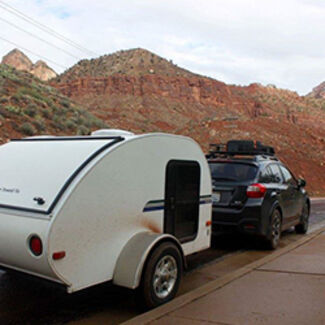
Rene R.

3/28/2017
Great and i do recommend them . Easy to grease the bearing juste à matter to be carefull when taking the Rubber seal off.

I converted to oil, only problem I over torqued the caps, causing cracks and leaks. I found leaks before damage, replaced caps installing with less torque no more problems.

Replacement cap for Kodiak Disc Brake.
Exactly what I needed but a little pric ey.
E Trailer has always been right with price and excellent service.
I have received my merchandize in a timely manner.
I will always look toward Etrailer first to find what I need.
Thanks
Gary
I love your products, as well as your knowledgeable staff.
The correct items and prompt delivery. I didn't need a free beer, too.
I give this product a two star rating because they only last about six months then they crack and break at the threads. These are not over tightened as I only hand tighten them to try and prevent said early demise, but no luck. They either need to use a better plastic or go back to the metal ones.
Exactly as avertised and fast delivery
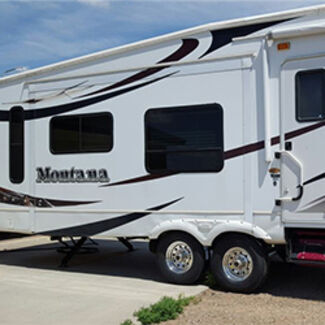
Vikki C.

8/30/2023
Working great, no issues
Exactly what we were looking for and came very quickly! Just had our brakes done on our coach and the technician over tighten one of the caps. Our manufacturer was going to charge us 4 times what etrailer charges. A BIG thank you!
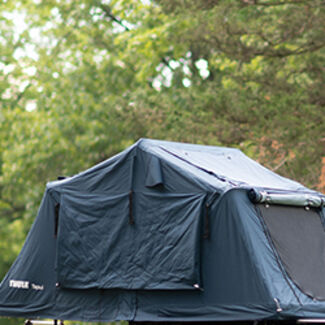
Barbara

5/19/2019
Caps are still doing their job, couldn’t be happier!

These caps are awesome and easy to install and remove. One word of warning... do not let the rim slide down and contact the edge of this cap when removing your tire!!!!!! They aren’t strong enough and will shear off the cap at the threads. This in no way is a fault of the cap, just a learning process if you have these caps as they aren’t designed to take a jolt of a dropping rim/tire during removal. It took us breaking a couple caps to figure out that it was “us” breaking the caps.
After this Grease Cap was damaged in a Tire Blowout! I had to rush to find another one to protect my wheel bearings.
Thank Goodness for etrailer. They always come thru for the products I need, when I need them!
Always recommend etrailer for all parts.
Needed to replace this item as one of mine had a slight leak. Always have good experience dealing with trailer. Quick delivery, reasonable prices.
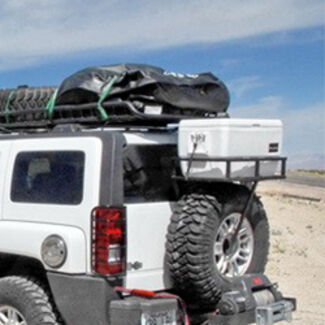
Jerome

8/17/2022
Great. Fluid stays in just fine

This cap is exactly what I needed for my 5th wheel which is equipped with oil filled wheel bearings. It arrived on time, just as all of my purchases from etrailer have. I have been finding what I need for almost ten years on etrailer and remain a satisfied customer!

The caps work properly, but the mediocre review is due to the poor design of the cap. Since it's made of plastic, it's easy to crack the cap when a tire changer removes the wheel and lets it drop straight down. The wheel hits the cap and cracks it. It's happened twice on my rv wheels.
I ordered 4 caps with O rings to replace the ones currently on my 5th wheel; I wanted to change out the gear lube. I knew from past experience and other's experience that they will leak at the O ring if it is too small in diameter. The O ring needs to be 1/8" in diameter. One of the OEM installed O rings was smaller, 3/32nd in diameter, I believe and it leaked. I was surprised and disappointed to find that 1 of the 4 new caps had the smaller diameter O ring. If I use it without changing out the O ring it would leak like the original one did.
I think that prior to shipping the O rings should be checked for proper sized O rings; I either had 3 that were right and one wrong size or 1 right size and 3 wrong. Either way, they need to be checked.
Quick service and good prices
I ordered two grease caps for my trailer having lost one on the road. E-trailer was easy to order from and I received the caps after jus a few days in the mail. I was able to track the shipment from the time it was shipped to my door. Ordering from E-trailer was a great experience and I will order more from them in the future.

I needed this 'elusive' cap quickly, as I was traveling. etrailer had them in stock, and Helen had them shipped very quickly. Once again, etrailer had the parts I needed at a fair price, and quick shipping. Very Happy!!
Ordering was quick and easy. Delivered quickly with no issues. Perfect!

THESE CAPS HAVE ALL FAILED. THEY BREAK UNDER THE ORING AND START LEAKING AFTER JUST A FEW TRIPS. I HAVE TWO THAT I PURCHASED NEW AND HAVE NOT INSTALLED AND THE ORINGS ARE ALL CRACKED. I RECCOMEND THE DEXTER CAPS.
You should after a SOCKET deal with the caps. You need one to torque them on.

These fit our trailer perfectly, and we have not had any issues with them. Easy install...will purchase again if we ever come across an instance for needing more. Thanks

I received my item quickly and it fit p erfectly.
See what our Experts say about this Kodiak Trailer Bearings Races Seals Caps
- Oil Seals and Outer Cap To Change From Grease Axle Bearing To OilTo ensure I get you the right parts, I need to know the hub bearing numbers printed on the front of the inner and outer bearings as well as the grease seal number. If we can find a match, I can help you with the oil kit. If you can't find the numbers on the bearings, you can use a digital caliper to assist with the inside diameter of the bearing and the outside diameter of the axle spindle. Please see attached photo for assistance.
view full answer... - Installation Torque Value for Kodiak Replacement Grease Cap KPCAPSince the Kodiak grease/oil cap # KPCAP is made of tough UV-resistant polycarbonate you don't need to worry about the torque recommendation on the item. Polycarbonate is a very tough material and you can rest assured that Kodiak would not indicate an inappropriate torque value on their product. Note also that torque is always specified as a range of values, not one specific value. On initial installation a new part will likely snug up at the lower end of the torque range. If it has been...
view full answer... - What Size Socket is Needed to Tighten the Kodiak XL ProLube Oil Bath Cap # KPCAPI went out into our warehouse and pulled a Replacement Cap # KPCAP to measure it and found that you would need to use a 2-1/4 inch socket. I did an internet search and was able to find companies that sold sockets this size.
view full answer... - Availability of Trailer Hub Cap for Mastercraft Boat Trailer that is ThreadedWe have a few options for replacement oil caps for trailer hubs but I would need to know the axle capacity of the trailer or the diameter of the current cap. I attached a link to a page that has all of the options we have but for example the part # KPCAP fits 7k axles and has a diameter of 2.875 inches.
view full answer... - Parts Needed To Add Electric Over Hydraulic Disc Brakes On Tandem Axle Trailer With Lippert 8k AxlesI would be happy to recommend all of the parts you need for adding electric over hydraulic disc brakes to your tandem axle trailer with 8000lb Lippert axles. All of the 8000lb disc brake rotors we offer use the inner bearing # 25580 and outer bearing # 02475, so you will want to make sure that your spindles use the same bearings. The easiest way to do this is by removing one of your hubs and looking for the bearing number stamped in the face of each bearing as shown in the included picture...
view full answer... - Replacement Plug Recommendation for Replacement Grease Cap # KPCAPThe replacement plug is not available so you'd need a new cap part # KPCAP.
view full answer... - Filling a Kodiak Oil Bath Disc Brake Hub and Oil CompatibilityI spoke with my contact at Kodiak and he said Amsoil Severe Gear 75W-140 would be acceptable on their oil bath hubs. When filling the hubs, you will want to remove the rubber plug from the oil cap and fill the hub to the bottom of the hole. When storing a trailer, it is a good ideal to jack up the trailer to remove some or all of the weight off of the tires. This may not always be possible, especially with larger trailers, but it is a good idea. My contact at Kodiak said you should not...
view full answer... - Replacement Oil Cap for Dexter Hub # 21-35The Kodiak Oil Cap # KPCAP you are looking at is a replacement cap for the Kodiak Pro Lube Kit. The oil cap you need is the Redline Oil Cap, Plug and O-Ring for Dexter 7-9K Trailer Axles # RG04-230. This will replace the oil cap on your trailer axles with Dexter 8-bolt hubs. I attached a review video of this oil cap you may want to check out.
view full answer... - Parts Needed To Convert 5TH Wheel With Tandem 7K Axles To Disc Brakes and 17-1/2" Wheels Oil LubedThe Kodiak Disc Brakes # KOD33FR are the brakes you will need to convert your 7,000lb axles to use disc brakes. This kit provides the brake assemblies for one axle so you will need 2 kits for your 5th wheel. It fits a standard #42 spindle with a 2.25" Oil Seal # XLPROLUBE2440SEAL. If your axles have the smaller 2.125" seal you will need 2 of the Seal Kits # RG06-090 to fit your axle. If you can provide me with the serial numbers off your Dexter axles I can verify the seal size. The brakes...
view full answer... - What Is the Hub Bore of the Kodiak 13" 8K Disc Brake KitThe Kodiak 13" 8K Disc Brake Kit part # K2HR858AE is designed to be used with the Grease Cap for Kodiak 8,000-lb Disc Brake Kits part # KPCAP which has a threaded diameter of 2-7/8". Therefore, that would be the hub bore opening on the hub. I am not sure if this answered your question but if you can provide more insight on what it is you are trying to do that may better help me understand.
view full answer... - Disc Brake Kit Compatible With Lippert 8,000 Torsion AxlesYes, the Kodiak Disc Brake Kit # K2HR858AE will fit your Lippert 8,000lb torsion axle. Your Lippert axle uses a #42 spindle which is what the Kodiak brake kit is designed to fit. Do note that this kit uses 5/8" wheel studs and you may have 9/16" or 5/8" studs on your Lippert axle. Please let me know if you only have 9/16" lugs. You will need the Bearing Kit # DBRKHW850 to complete the hub. And I do recommend keeping an extra Grease Cap # KPCAP on hand in the event it becomes damaged or...
view full answer... - Does The Kodiak Disc Brake Kit K2HR858DE Use Grease Or Oil To Lube The Hub Bearings?The Kodiak Disc Brake Kit # K2HR858DE is able to be used as a grease lube hub or a oil lube. The Bearing Kit # DBRKHW850 will provide you with bearings, oil seals and lug nuts needed for the Kodiak kit to use as a oil bath hub. The Kodiak Synthetic Bearing Oil for Oil Bath Hubs # XLPROLUBE will better work to keep the bearings lubed. I find that it is also easier to service as you can physically see the oil in the hub. The Bearing Kit # DBRKHW85G will provide you with the bearings,...
view full answer... - Is There a Bearing Buddy for a Hub Bore with 2.25 Inch DiameterIf your hub bore is 2.25" in diameter like the # KPCAP then the closest Bearing Buddy Grease Caps would be the # BB2240, which measure 2.24", but this is commonly found to be compatible with Dexter 5200-lbs axles with an outer race 1729 in the hubs. I'm not quite sure this is what you're looking for so you'd want to measure your hub bore using a digital calipers like the # PTW80157 to make sure that you're getting the right ones. Those # BB2240 are push in Bearing Buddies so you'd also...
view full answer... - Replacement Oil Bath Cover for Trailer HubWe most likely have a cover that is compatible. I will need the exact outside diameter of inside of the cover where it meets the hub to confirm a fit. I have linked the page to all of the options we currently carry to assist.
view full answer... - How Much Torque is Applied to a Kodiak Grease Cap for Installation I spoke to my contact at Kodiak and they informed me that a socket should not be used when removing or installing the grease cap like part # KPCAP as this would likely cause damage to the polycarbonate material used in it's construction. If the cap was over tightened then you can use a crescent wrench to loose it. The cap should then only be hand tightened. The same holds true for part # RG04-230.
view full answer... - Difference Between the Oil Bath Caps # XL-PLCAP and # KPCAPThe difference between the two replacement oil batch hub caps you referenced part # KPCAP and # XL-PLCAP is the size of hub they are designed to fit.
view full answer... - Replacement Plastic Cap and Seal for 8K EZ Lube AxleThe Replacement Grease Cap for Kodiak 8,000-lb Disc Brake Kits # KPCAP is designed to fit a 2.25 inch spindle and has a thread outer diameter of 2-7/8 inch by 12 thread. We also have the Oil Cap, Plug and O-Ring for Dexter 7-9K Trailer Axles # RG04-230 with the same dimensions. We don't have the Viton O-ring outside of the cap replacement kit. Either of these will work on the EZ Lube axles.
view full answer...
Do you have a question about this Trailer Bearings Races Seals Cap?
Info for this part was:











At etrailer.com we provide the best information available about the products we sell. We take the quality of our information seriously so that you can get the right part the first time. Let us know if anything is missing or if you have any questions.


































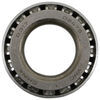





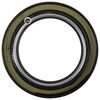










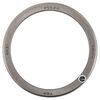






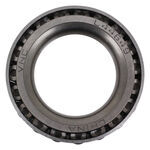
Libby
11/3/2023
Working great!